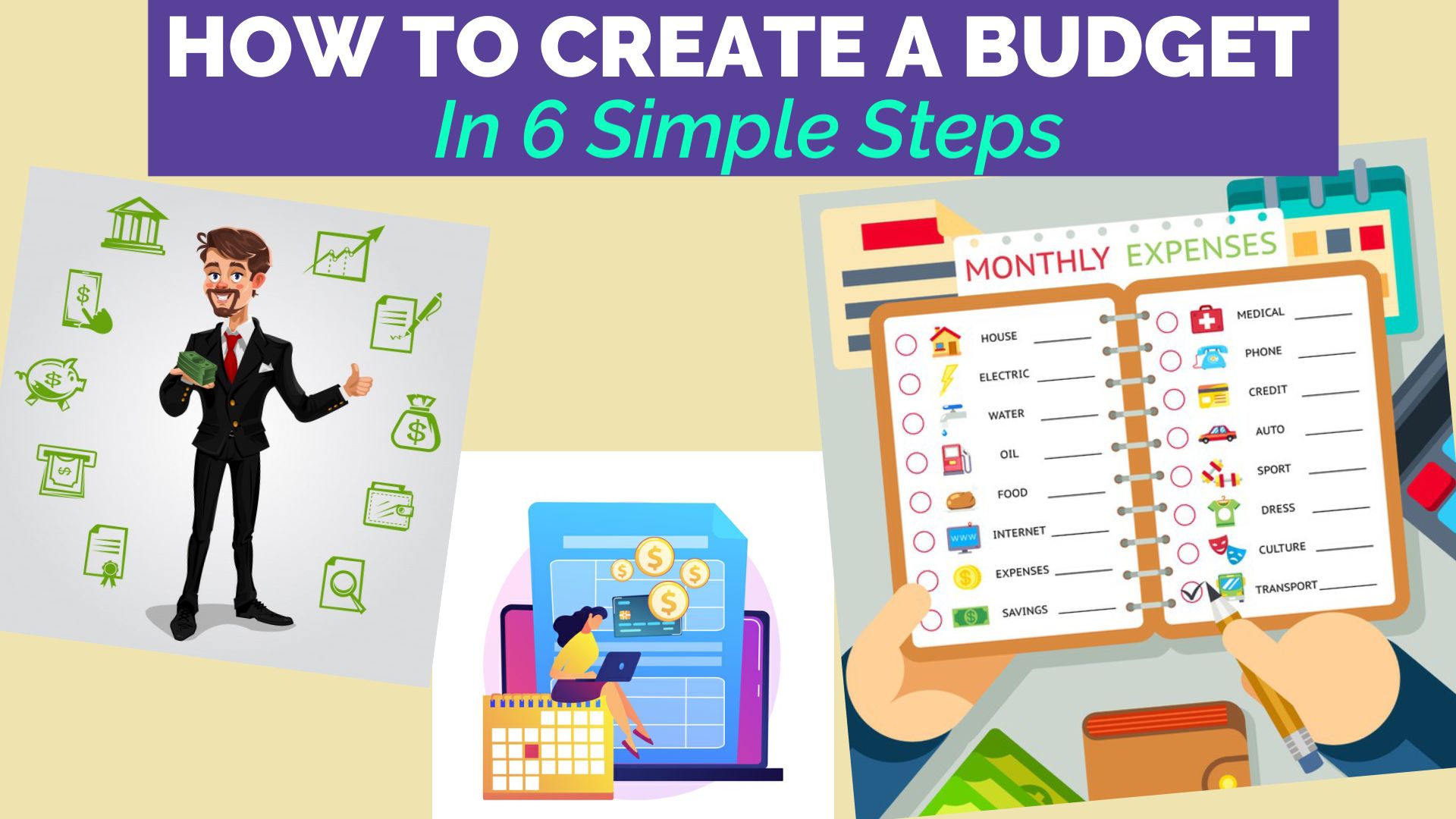How to Create a Budget for Kids and Teens
This video explains how to create a budget in a simple, concise way for students & beginners. It could be used by kids & teens to learn about budgeting, or used as a money & personal finance resource by parents and teachers as part of a Financial Literacy course or K-12 curriculum.

Suitable for students from grade levels:
- Kindergarten
- Elementary School
- Middle School
- High School
The topics covered are:
- Step 1: Collect Financial Details
- Step 2: Calculate Net Income
- Step 3: Tag Existing Expenses
- Step 4: Set Savings Goals
- Step 5: Put Together a Plan
- Step 6: Check-In Regularly
Most people dread the idea of creating a budget, as they think it will lead to a restrictive lifestyle that dictates how every dollar is spent. In fact, it is quite the opposite.
Budget is a financial plan that provides a good view of your finances, helps make your financial goals a reality and lets you live a stress-free life. The plan, usually for a specific period like a month, shows where your money comes from, and where it goes – whether towards essential expenses, discretionary expenses, debt repayment, savings or investments.
We all know how important it is to live within our means – a budget is the tool that helps us achieve that.
How to Create a Budget for Kids: A Step by Step Guide
There is no one way to create a budget, but the best method is the one that you are most likely to actually follow. One of the popular budgeting philosophies is a 50/30/20 model, where half of your income goes towards needs, 30% towards wants and the remainder towards savings and debt repayment.
Here’s a step-by-step guide to help you create a simple yet effective budget.
1. Collect All Your Financial Paperwork
In order to start creating a budget, you need to make sure all your income and expense details are readily available.
This includes your bank statements, brokerage statements, paystubs, credit card bills, utility bills, insurance bills, mortgage or other loan statements, etc.
2. Calculate Your Net Income
Make sure you include all your earnings, whether from salary, tips, a business, investments, rental income or freelancing.
Net income is your take home pay, and is calculated after tax and other deductions like social security, 401k, health insurance, etc. If your income changes from month to month, it’s best to be conservative and take the lowest income in the recent past as your baseline.
3. Tag All Your Existing Expenses
Make a list of all your spending based on your bank and credit card statements from the past few months. Group these expenses into needs, or essentials, like rent, groceries, utilities, insurance etc., and wants or discretionary expenses, like eating out, movies, shopping, etc.
This will give you an idea of your overall spending habits. If you are overspending, wants is what you will first cut down on.
Click to Tweet
4. Set Savings Goals
Whether it is a short-term goal like an upcoming vacation or long-term goals like retirement or college education, having specific goals helps with allocating funds towards them.
Also, include categories like an emergency fund and debt repayment.
5. Put Together a Plan
A budget doesn’t have to be complicated or require fancy tools. You can create a plan in a simple spreadsheet, or to make things even simpler, use our free budgeting template linked in the description box below.

The idea is to have a zero-based budget, which means all your income is allocated towards specific expenses, or savings goals – so you are left with zero unbudgeted dollars. Once you enter your net income, our free template will show you how much of it is available for different categories like essential expenses, discretionary expenses, emergency fund, retirement planning and savings goals.
You can compare what you have been spending against the plan to see where your actual spending differs from the plan, and how you can adjust your lifestyle to align with the plan. For instance, if you are spending too much on eating out, you can start making some meals at home and use the extra money towards additional debt repayment.
Remember, the seemingly insignificant savings can quickly add up to something substantial.
If you are lucky enough to be well within the plan and have extra money to spare, you can tuck it under the ‘emergency fund’ or ‘investments’ bucket – or even treat yourself to something special.
6. Check-In Regularly
Budgeting is not a one-time activity. It requires discipline and consistency to stay on track. Keeping a record of your expenses, preferably daily, helps make sure you are not overspending on any one category.

At the end of each month, you need to balance your budget to see where you stand and what you need to adjust for the next month.
You also need to evaluate your budget plan periodically to make sure it reflects your current priorities and standard of living. There are many things that could impact your plan – your income may have significantly changed, you may have started a family, you may have met some of your savings goals, you may have moved to a low-cost location, and so on.
How to Create a Budget for Kids: Conclusion
Bottom line, don’t be too hard on yourself by expecting 100% compliance with the budget from day 1.
You will have to slowly change your habits to comply with the plan and start living within your means. Give yourself some wiggle-room and time to adjust.
And once you are able to stick to your budget, you will surely work your way towards financial freedom.
Now that you know how to create a budget, what are you waiting for? Click on this link to get our free budgeting template, and start creating your budget today!
Download Transcript: Ideal for Use by Teachers in their Lesson Plan to Teach Kids and Teens
Podcast: How to Create a Budget in 6 Simple and Effective Steps
Fun, informative and concise episodes by a 10-year old, breaking down complex financial concepts in a way that kids and beginners can understand. Episodes cover personal finance topics like saving, investing, banking, credit cards, insurance, real estate, mortgage, retirement planning, 401k, stocks, bonds, income tax, and more, and are in the form of a conversation between a cowboy (a finance novice) and his friend, a stock broker. Making finance your friend, only at Easy Peasy Finance.
A little bit about me: I have been fascinated with the world of personal finance since I was 6! I love to read personal finance books, and keep myself updated on the latest by reading various personal finance magazines. My friends often ask me questions about finance because they find it complex and intimidating. That’s what inspired me to start my YouTube channel called Easy Peasy Finance when I was 8, and this podcast 2 years later.
Always thought of making a budget, but have been putting it off thinking its too difficult? Find out how you can effortlessly create a budget in 6 simple steps.
Show notes and transcript at: https://www.easypeasyfinance.com/how-to-create-a-budget-for-kids/


